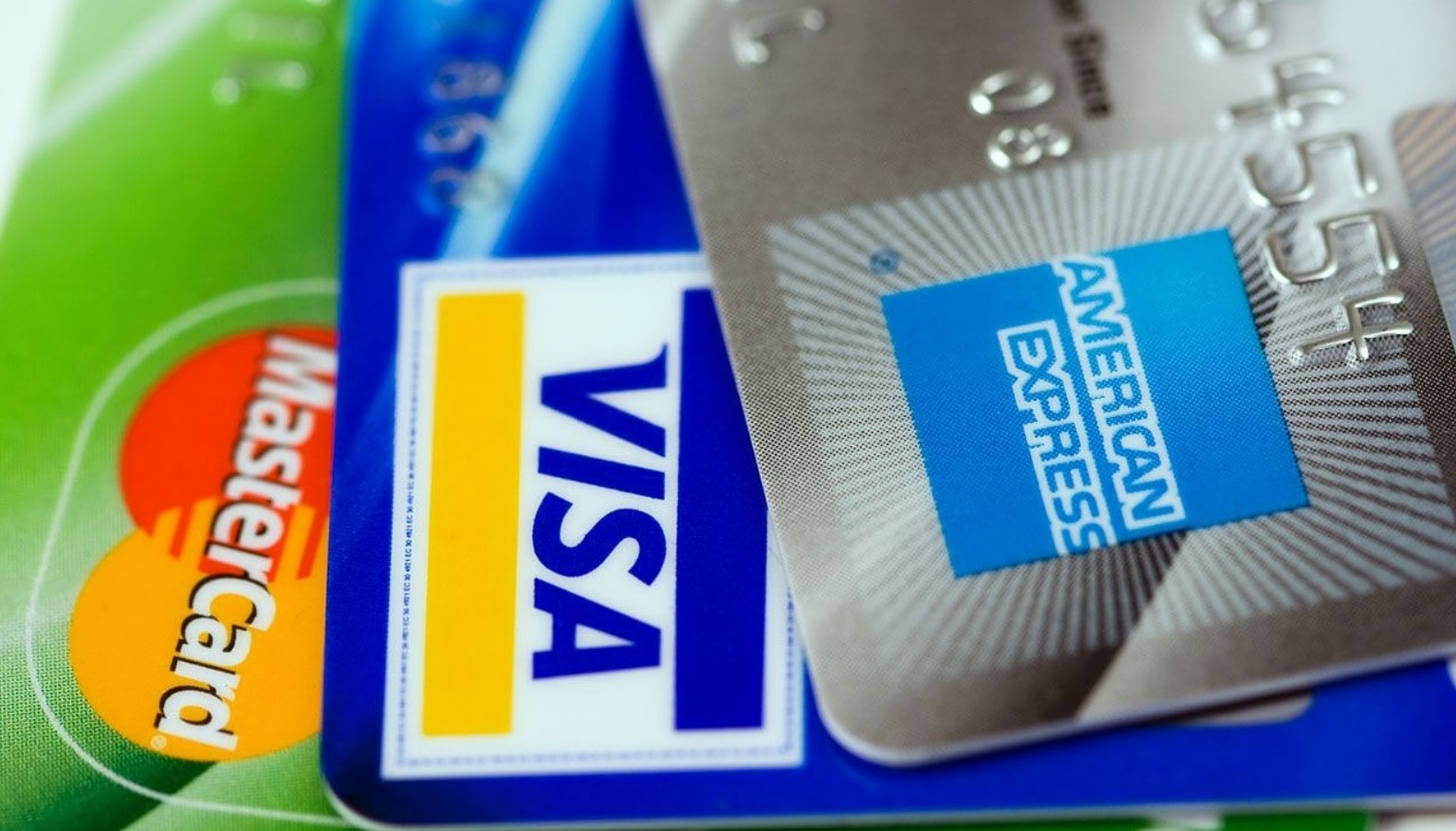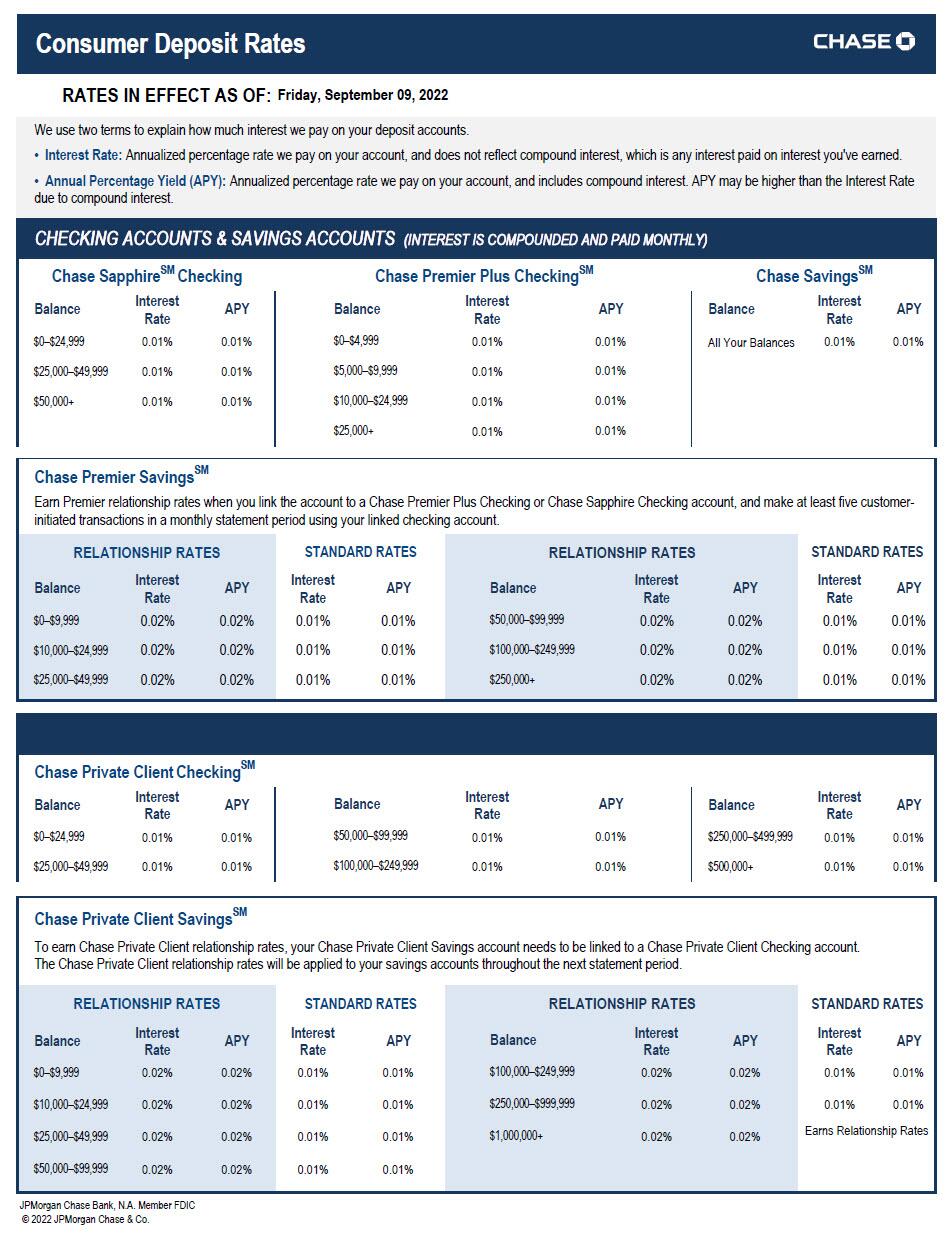 By Tyler Durden
By Tyler Durden
While the Fed’s rate-hiking cycle is about to push the overnight Fed Funds Rate to 2.50% in two weeks, banks have so far completely refused to translate these sharply higher wholesale rates into benefits for US savers. In fact, as the following breakdown of consumer deposit rates at the largest US bank, one would think that the US is still stuck at ZIRP.
But while big money center banks refuse to even consider lifting the rate on their savings accounts, they have no such qualms when it comes to how much they charge on credit cards, and according to Bankrate.com’s latest survey, the average credit card rate is now 18.03%, the highest on record since January 1996.
According to Ted Rossman, senior industry analyst at Bankrate,
“the average credit card rate is now a record-high 18.03%, surpassing the previous record of 17.87% which was set in April 2019. And Federal Reserve Chairman Jerome Powell has made it clear that the Fed is not done raising rates – not by a long shot. According to the CME FedWatch tool, there’s a strong likelihood the Fed will implement another 75-basis point hike later this month, with smaller increases projected for November and December. The best guess, according to investors, is that rates will rise another 150 basis points by the end of the year.”
“Almost all credit cards have variable rates which track the Prime Rate, which is typically three percentage points higher than the federal funds rate which is set by the Federal Reserve. So there’s a direct pass-through from the Fed’s actions to credit cardholders. Card issuers tack a profit margin onto the Prime Rate, often something like 12% or 13%. Rate hikes generally affect new and existing balances, so most credit cardholders are currently facing rates that are 225 basis points higher than they were just six months ago. During the last rate hike cycle, it took the Fed three years to raise rates 225 basis points (from December 2015 to December 2018). This time, it only took them 4 ½ months from mid-March to late July. And there’s more to come.”
“There’s a significant cumulative effect to these rate hikes. Let’s say you started the year with a $5,000 balance on a credit card charging 16%. Minimum payments would have kept you in debt for 184 months and racked up $5,406 in interest charges. That would have been bad enough, but at 18.25%, those minimum payments will now drag on for 189 months and accumulate $6,241 in interest. That’s an increase of $835. Of course, the best practice is to pay way more than the minimum – pay it all if you can. If that’s not possible, forget about chasing rewards and seek the lowest interest rate possible. There are 0% balance transfer offers (https://www.bankrate.com/finance/credit-cards/balance-transfer/) that last as long as 21 months.”
We get more details on these record rates courtesy of creditcards.com, according to which the average APR is even higher, at 18.17%, and writes that more than a month after the Federal Reserve announced its latest three-quarter-point rate hike, several more lenders adjusted the APRs they advertise on brand-new cards, including Discover, USAA and Navy Federal Credit Union.
Until this week, Discover was among the last major lenders to match the Fed’s most recent rate hike. Bank of America, Chase, Citi, American Express, Wells Fargo, Barclaycard and U.S. Bank have also recently hiked the APRs they advertise by 0.75 percent. So have most smaller lenders, such as Fifth Third Bank, PNC, Union Bank, HSBC and KeyBank, among others.
Easiest way to get your first Bitcoin (Ad)
As a result, the national average card APR has broken record after record this summer, ultimately soaring to its highest point ever in recent weeks. Until this summer, the highest APR average CreditCards.com had ever recorded was 17.8 percent — a difference of 0.37 percentage points.
Now, APRs are set to soar again as the Federal Reserve gears up for another big rate announcement and other lenders continue to catch up to previous federal rate hikes. So far, the Federal Reserve has increased rates by a historic 2.25 percentage points since March and is expected to hike rates again later this month.
And with more lenders still due for another rate hike, the average card APR is poised to soar.
Already at a record high, the national average card APR won’t hold still for long. The average APR for brand-new cards is already well above previous record highs, with the average minimum card APR climbing well above 18 percent. A year ago, by contrast, the national average credit card APR registered at just 16.22 percent.
Meanwhile, the average maximum APR on a brand-new card offer has also climbed sharply in recent months, increasing most recently to 25.59 percent, according to CreditCards.com data. As a result, many new cardholders are currently being assigned APRs well above 20 percent.
CreditCards.com only considers a card’s lowest possible interest rate when calculating the national average. However, most credit card offers advertise a wide range of possible APRs — particularly on general market and rewards cards that appeal to a broad audience. Although some applicants with the very highest credit scores may be assigned a card’s lowest rate, many others are instead assigned either a card’s maximum possible interest rate or an APR that falls directly in the middle of the two extremes.
Currently, the average median card APR is 21.88 percent, according to CreditCards.com data.
But cardholders hoping for a reprieve from such high rates are unlikely to get one anytime soon. The Fed has made it clear that it plans to continue hiking rates for the foreseeable future until prices cool off more substantially.
As a result, it is likely that the average real APR will hit a mindblowing 20% by the time the Fed finally pushes the economy into recession.
Source: ZeroHedge
Top image: Pixabay
Become a Patron!
Or support us at SubscribeStar
Donate cryptocurrency HERE
Subscribe to Activist Post for truth, peace, and freedom news. Follow us on SoMee, Telegram, HIVE, Flote, Minds, MeWe, Twitter, Gab, What Really Happened and GETTR.
Provide, Protect and Profit from what’s coming! Get a free issue of Counter Markets today.




Be the first to comment on "Average US Credit Card Rate Hits Highest On Record"